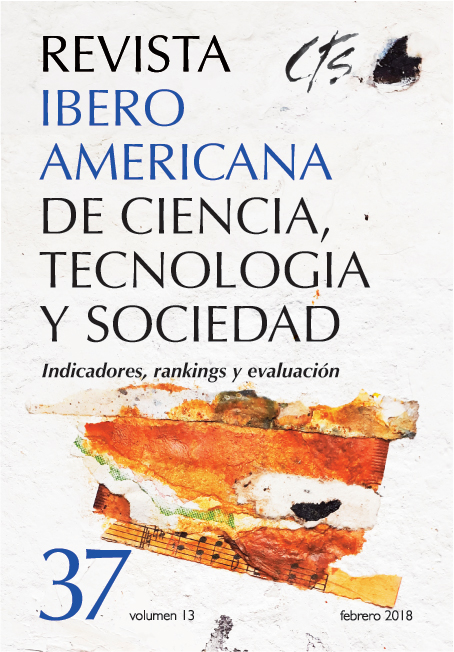University Rankings: Global Quality and Local Contexts
Keywords:
rankings, higher education, indicators, universityAbstract
University rankings have become a staple in the fields of higher education policy and institutional development strategy. Their impact is echoed in the media around the world. The number and diversity of rankings, global, national and specialized, in the United States, Europe and Asia have increased in the past few years, developing into a quality scale that created a body of regulations of sorts that Latin American higher education policies and institutions have to consider. This paper is a conceptual approach to the most widely used rankings, undertaking a critical examination of the implicit quality model and the theoretical and methodological criteria that guide them. Specifically, it discusses the existing tension between global approaches and local contexts.Downloads
References
AGUILLO, I. (2012): “Rankings de Universidades: El Ranking Web”, Higher Learning Research Communications, vol. 2, n° 1. Disponible en: www.hlrcjournal.com/index .php/HLRC/article/download/56/64.
BARSKY, O. (2014): La evaluación de la calidad académica en debate: los rankings internacionales de las universidades y el rol de las revistas científicas, Buenos Aires, Ed. Teseo, Universidad Abierta Interamericana.
BENGOETXEA, E. y BUELA-CASAL, G. (2012): “The new multidimensional and userdriven higher education ranking concept of the European Union”, International Journal of Clinical and Health Psychology, vol. 13, pp. 67?73. Disponible en: http://www.sciencedirect.com/science/article/pii/S1697260013700097.
BRISOLLA, S. (2010): “Rankings de universidades: ¿para qué y cómo construirlos?”, Los foros de CTS, Edición especial 2015 - Revista Iberoamericana de Ciencia, Tecnología y Sociedad –CTS, pp. 79-84. Disponible en: http://www.revistacts.net/losforos-de-cts/309-ejes tematicos/703-eje-3-ciencia-y-universidad.
FEDERKEIL, G. et al. (2012): “Classifications and Rankings”, en F. A. Van Vught y F. Ziegele (eds.): Multidimensional Ranking The Design and Development of UMultirank. Disponible en: http://www.springer.com/us/book/9789400730045.
FRONDIZI, R. (1986): Ensayos Filosóficos, México DF, Fondo de Cultura
Económica.
GIBBONS, M. et al. (1997): La nueva producción de conocimiento. Ediciones Pomaire – Corredor. Barcelona.
HAZELKORN, E. (2015): Rankings and the Reshaping of Higher Education. The Battle for World-Class Excellence, Nueva York, Palgrave MacMillan.
IREG - OBSERVATORY ON ACADEMIC RANKING AND EXCELLENCE (2015): Pautas para grupos de interés de rankings académicos. Disponible en: http://iregobservatory.org/en/pdfy/IREG Guidelines_Spanish.pdf.
LIU, N. y CHEN, Y. (2005): “Academic Ranking of World Universities – Methodologies and Problems”, Higher Education in Europe, vol. 30.
MARGINSON, S. (2006): “Global university rankings: private and public goods”, 19º Annual CHER conference, Kassel, 7-9 de septiembre.
MOED, H., BURGER, W., FRANKFORT J. y VAN RAAN, A. (1984): “The use of bibliometric data for the measurement of university research performance”, Research Policy and Science Studies Unit, Bureau Universiteit, University of Leiden.
PÉREZ-ESPARRELLS, C. y GÓMEZ-SANCHO, J. (2010): “Los rankings
internacionales de las instituciones de educación superior y las clasificaciones universitarias en España: visión panorámica y prospectiva de futuro”, Documento de trabajo Nº 559/2010, Fundación de las Cajas de Ahorros, Madrid.
PÉREZ RASETTI, C. (2015): “En contra de los rankings de universidades: el marketing pretencioso”, Los foros de CTS, Edición especial 2015 - Revista Iberoamericana de Ciencia, Tecnología y Sociedad –CTS, pp. 75-78. Disponible en: http://www.revistacts.net/los-foros-de-cts/309-ejes-tematicos/703-eje-3-ciencia-yuniversidad.
RAUHVARGERS, A. (2011): Global University Rankings and their Impact, European University Association.
STELLA, A. y WOODHOUSE, D. (2006): Ranking of Higher Education Institutions, Occasional Publications n° 6, Australian Universities Quality Agency (AUQUA).
TOMÀS FOLCH, M, FEIXAS, M., BERNABEU-TAMAYO, M. y RUIZ RUIZ, J. (2015): “La literatura científica sobre rankings universitarios: una revisión sistemática”, REDU - Revista de Docencia Universitaria, vol. 13, n° 3, pp. 33-54.
USHER, A. y SAVINO, M. (2007): “A Global Survey of University Ranking and League Tables”, Higher Education in Europe, vol. 32, n° 1.
VAN RAAN, A. (2005): “Fatal attraction: Conceptual and methodological problems in the ranking of universities by bibliometric methods”, Scientometrics, vol. 62, n° 1, pp. 133–143.
Downloads
Published
How to Cite
Issue
Section
License
All CTS's issues and academic articles are under a CC-BY license.
Since 2007, CTS has provided open and free access to all its contents, including the complete archive of its quarterly edition and the different products presented in its electronic platform. This decision is based on the belief that offering free access to published materials helps to build a greater and better exchange of knowledge.
In turn, for the quarterly edition, CTS allows institutional and thematic repositories, as well as personal web pages, to self-archive articles in their post-print or editorial version, immediately after the publication of the final version of each issue and under the condition that a link to the original source will be incorporated into the self-archive.











